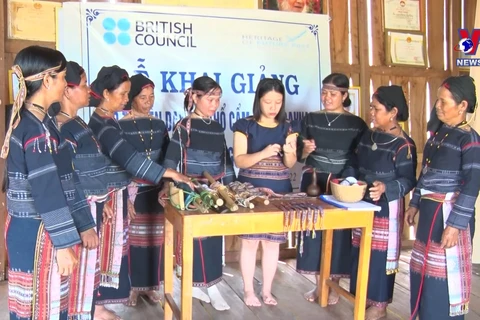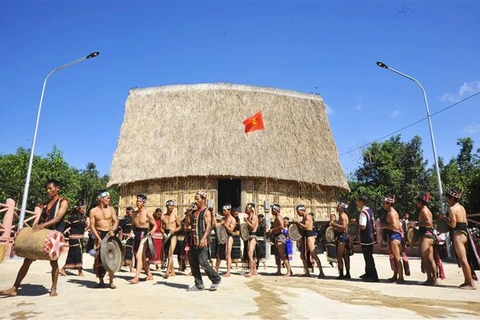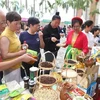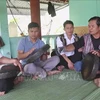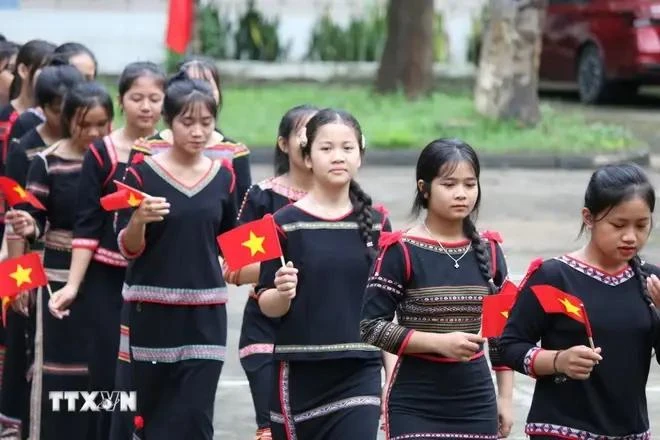
Kon Tum (VNA) - As the younger generation increasingly distances themselves from traditional values, elderly artisans from the Bahnar ethnic minority community in the Central Highlands province of Kon Tum are passing on the traditional craft of brocade weaving to youth in a bid to preserve this unique cultural heritage.
For the ethnic minorities in the Central Highlands region in general, and the Bahnar people in particular, the traditional craft of brocade weaving is regarded as the "soul" of the community, as it embodies unique cultural characteristics.
Weaving is one of the unique traditional crafts of the Bahnar people, creating a distinct identity that sets them apart from other ethnic groups. For the Bahnar people, brocade is not only attractive for its beauty but also holds cultural, religious, and significance in daily life.
Artisan Y Tui, 43, in Kroong commune, Kon Tum city, said that the patterns on the brocade often feature images of rice grains, plants, animals, and daily activities. Over time, the Bahnar people have created many unique patterns and designs to suit the preferences of young people.
Since childhood, women have had their passion for brocade weaving inspired by their mothers or grandmothers. 72-year-old artisan Y Yin, in Dak Ro Wa commune, Kon Tum city, is a rare artisan who is proficient and can use her ability to "tell ancient stories" on brocade.
Most of the ancient stories woven into fabric often come with happy endings to educate the young generation and the community about the culture and beliefs of the ethnic minorities here, the artisan said.
To preserve traditional crafts and promote livelihood, the Bahnar people in Kon Tum have begun selling their handmade woven products, aiming to spread their craft widely.
In the Kon Ko Tu Community Tourism Village, thanks to the skillful hands of artisan Y Yin, many visitors can experience traditional weaving methods and see the brocade fabrics of the Bahnar people.
The traditional hand-weaving craft of the Bahnar ethnic group in the districts of Dak Ha, Sa Thay, and Kon Ray, and Kon Tum city was recognised as national intangible cultural heritage by the Ministry of Culture, Sports, and Tourism in February 2023.
Deputy Director of the provincial Department of Culture, Sports, and Tourism Phan Van Hoang, said to continue preserving and promoting the traditional weaving craft of local ethnic groups, the agency has strengthened communication efforts to inform the community of the significance of national intangible cultural heritage.
It has also recommended local authorities to allocate budget resources to partially support the preservation of cultural heritage, and encouraged locals to continue growing cotton and weaving fabric, using traditional materials to preserve the traditional culture, he added.
The department will implement programmes and projects related to the art of brocade weaving, including arranging classes to teach the craft to ethnic minorities in the province, and organising traditional festivals, thus contributing to preserving the traditional craft./.
